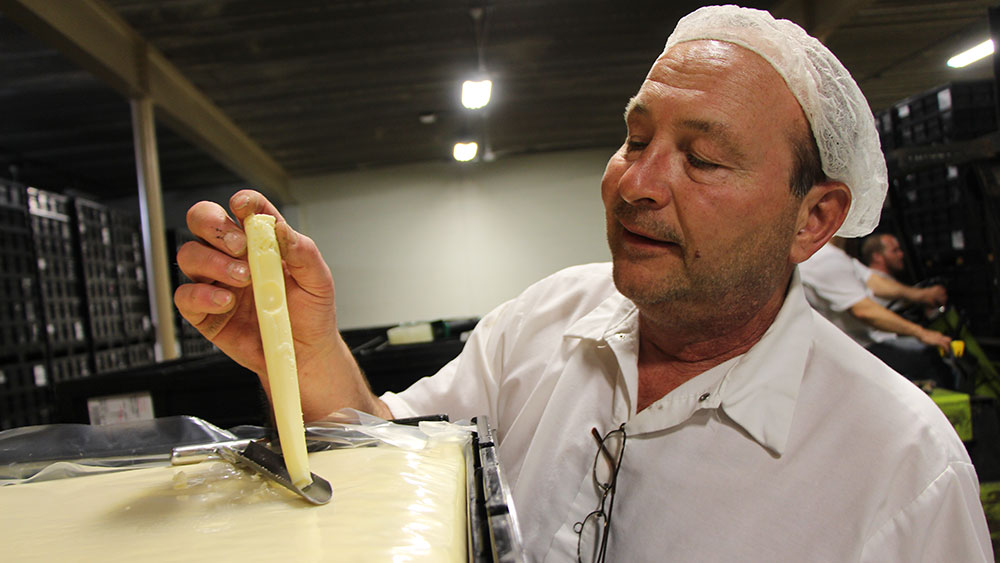Exploring Melbourne Made Cheese: Why Floridia Cheese Is a Must-Try
Exploring Melbourne Made Cheese: Why Floridia Cheese Is a Must-Try
Blog Article
Opening the Secrets of Artisanal Cheese Making: A Step-by-Step Do It Yourself Guide
In the world of culinary craftsmanship, artisanal cheese making stands as a testimony to the fragile equilibrium between custom and innovation. Each step in the process, from picking the right milk to developing aging techniques, holds within it a riches of understanding gave through generations. As we begin on this trip to debunk the art of creating charming cheeses, we are confronted with a tapestry of skills and secrets waiting to be untangled. Join us as we explore the complexities of this old craft, where science, patience, and art merge to produce flavors that tantalize the senses.
Selecting the Right Milk
When beginning on the journey of artisanal cheese production, the choice of milk plays an essential duty in figuring out the high quality and characteristics of the last product. The kind of milk chosen impacts the flavor, appearance, and in general account of the cheese.
In addition, the resource of the milk, whether from cows, goats, lamb, or buffalo, contributes distinct tastes and attributes to the cheese. Each type of milk brings its own subtleties, allowing for a vast variety of cheese selections to be crafted based on the selected milk.
Culturing and Coagulating
To start the cheese-making procedure, the crucial steps of culturing and coagulating need to be meticulously carried out to change milk into curds and whey. Culturing involves presenting valuable bacteria to the milk, which after that starts the fermentation procedure. These microorganisms convert lactose (milk sugar) right into lactic acid, developing the acidic atmosphere essential for coagulation. The type of culture utilized can substantially influence the taste, structure, and ripening of the last cheese item.

The timing and temperature level control during culturing and coagulation are important variables that affect the last end result of the cheese. Appropriate implementation of these steps is vital to make certain the wanted structure, taste, and consistency of the artisanal cheese being generated.
Draining and Pressing Curds
After the milk proteins have actually coagulated and the curds have actually been cut to launch whey, the following crucial step in artisanal cheese making includes draining pipes and pushing the curds to accomplish the desired structure and consistency of the last cheese item. Draining pipes is the procedure of separating the curds from the whey. This can be done by transferring the curds into a cheesecloth-lined bowl-shaped sieve or mold and permitting the whey to drain pipes off naturally. The moment for draining can differ depending upon the sort of cheese being made and the preferred wetness material.
Pushing helps remove any remaining whey and compacts the curds to form a solid cheese wheel. Proper draining and pressing are critical actions that dramatically influence the top quality and features of the artisanal cheese being generated.
Aging and Flavor Methods
Carrying out precise aging and flavoring techniques is pivotal in boosting the deepness and intricacy of artisanal cheeses, website here raising their taste profiles to exquisite levels of improvement and refinement. Aging plays a crucial duty in creating the special flavors and textures that identify artisanal cheeses. During the aging process, cheeses are saved in meticulously managed atmospheres where factors such as air flow, humidity, and temperature level are controlled to encourage the development of valuable mold and mildews and bacteria. This regulated atmosphere enables the cheese to grow slowly, creating complicated fragrances and rich tastes.
Seasoning techniques also add dramatically to the final taste of artisanal cheeses. Cheesemakers might pick to introduce extra tastes by including ingredients such as natural herbs, flavors, or even fruits into the cheese during the manufacturing process. In addition, some cheeses are washed or massaged with different liquids, such as salt water or alcohol, to enhance their appearances and flavors.
Wrapping and Storing Cheeses

Conclusion
To conclude, grasping the art of artisanal cheese making entails carefully choosing the right milk, complying with specific culturing and coagulating processes, draining pipes and pushing curds successfully, and making use of different aging and flavor strategies. By adhering to these steps carefully and with attention to detail, you can produce your very own delicious and special cheeses in the house. Remember to wrap and save your cheeses properly to make sure optimum taste and appearance advancement. Pleased cheese making!
Each kind of milk brings its very own subtleties, permitting for a vast array of cheese varieties to be crafted based on the chosen milk.After the milk healthy proteins have actually coagulated and the curds have actually been reduced to launch whey, the next vital action in artisanal cheese making includes draining and pressing the curds to achieve the desired texture and consistency of the last cheese item. The majority of cheeses must be covered in wax paper or cheese paper to enable them to breathe while safeguarding them from drying out. For cheeses that need to proceed aging, such as bloomy peels or cleaned skins, ensure they are stored in an awesome setting like read what he said a cheese cavern or a refrigerator set to the appropriate temperature level. By paying focus to the covering and storage of artisanal cheeses, cheese makers and fanatics can protect the stability of these specials and totally appreciate their complicated tastes.
Report this page